Sustainable Cooking
Easy Almond Asian Sauce: A Food Processor Recipe
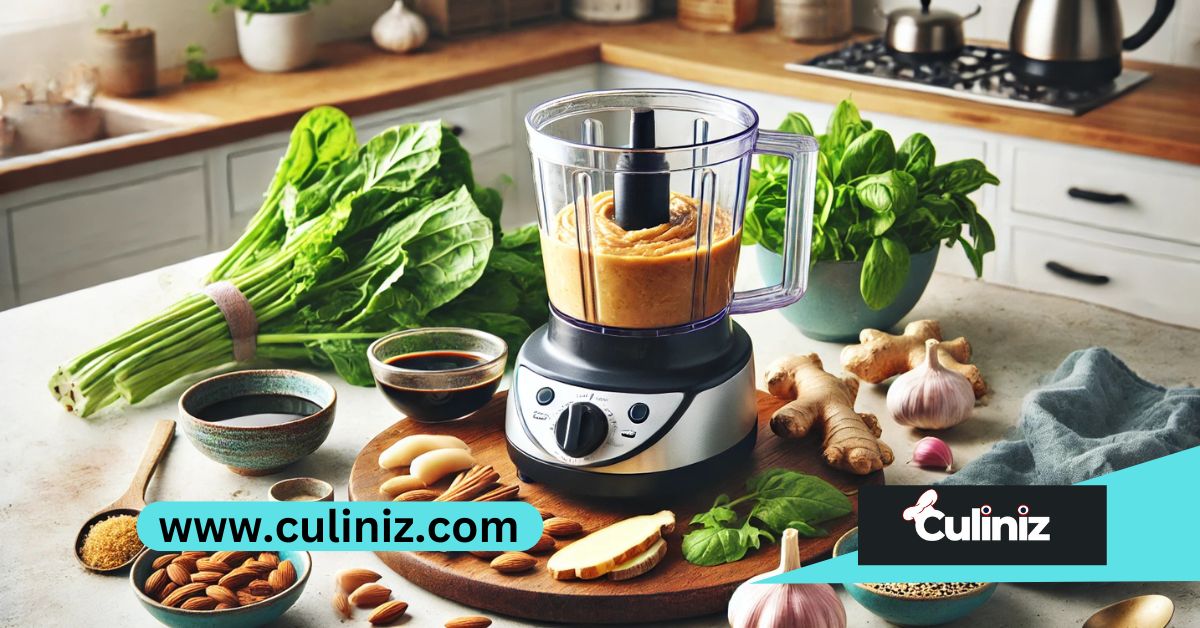
Introduction
Whether you’re a fan of rich, nutty flavors or looking for a healthy alternative to traditional sauces, this almond-based Asian sauce is a must-try! Made entirely in a food processor, this recipe is not just quick and versatile, but also incredibly easy to follow. In this guide, you’ll learn everything from ingredient selection to blending tips, all laid out in a straightforward format. Let’s dive into how to make this sauce, its health benefits, and some creative ways to use it!
Why Make an Almond-Based Asian Sauce?
This almond-based Asian sauce is a delicious, nutrient-dense twist on traditional sauces. By using almonds, you’ll achieve a creamy texture without dairy, along with a unique, mild nuttiness that perfectly complements Asian-inspired flavors like soy sauce, ginger, and garlic. What’s more, it’s not just vegan, gluten-free, and keto-friendly (with minor adjustments), but it’s also highly adaptable to different diets and taste preferences, ensuring everyone can enjoy its benefits.
With its combination of savory, tangy, and slightly sweet flavors, this sauce works well as a dressing, dip, or even a marinade. And thanks to the food processor, it’s a breeze to make in under 15 minutes, making it a perfect choice for those with a busy lifestyle!
Recipe Overview: Almond-Based Asian Sauce in a Food Processor
- Prep Time: 10 minutes
- Blending Time: 5 minutes
- Total Time: 15 minutes
- Serving Size: Makes approximately 1 cup of sauce
- Storage: Keeps for up to 1 week in the refrigerator or 3 months frozen
Health Benefits of Almonds in This Sauce
Almonds are a powerhouse of nutrients, making this sauce not only flavorful but also nutritious. Here are some key health benefits:
- Healthy Fats: Almonds are rich in monounsaturated fats, known for promoting heart health and reducing bad cholesterol.
- High Protein Content: Each serving provides a dose of plant-based protein, ideal for those following vegan or vegetarian diets.
- Fiber-Rich: Almonds are high in fiber, supporting digestive health and helping with satiety.
- Vitamins and Minerals: This sauce is a good source of vitamin E, magnesium, and antioxidants, supporting skin health and reducing inflammation.
Adding these benefits to your meal is as easy as blending almonds into this delicious sauce!
Ingredients for Almond-Based Asian Sauce
Main Ingredients
- Almonds (1 cup): The star of the sauce, almonds provide creaminess and nutty flavor. You can use raw or roasted almonds, depending on your taste preference.
- Soy Sauce (2–3 tbsp): Adds a rich umami flavor. Substitute it with tamari to make it gluten-free.
- Garlic (1 clove): Adds depth and savoriness. Fresh garlic is best, but garlic powder can work in a pinch.
- Ginger (1 tsp, minced): Adds warmth and a slightly spicy, aromatic quality. Fresh ginger is recommended.
- Rice Vinegar (1 tbsp): Balances the rich flavors with a touch of acidity.
- Sweetener (1 tbsp): Honey, maple syrup, or a keto-friendly sweetener works well here, adding a hint of sweetness to round out the flavors.
- Sesame Oil (1 tsp, optional): Adds a nutty, aromatic flavor that enhances the Asian profile of the sauce.
Optional Ingredients for Customization
- Chili Paste or Sriracha: For those who enjoy a spicy kick.
- Coconut Milk or Water (1/4 cup): Use to adjust the thickness of the sauce; coconut milk will also add a subtle sweetness.
- Lime Juice: A squeeze of lime can add a refreshing citrus note.
Step-by-Step Recipe: Making Almond-Based Asian Sauce
Step 1: Prepare the Almonds
- Toasting (Optional): If you want a deeper flavor, toast the almonds in a dry skillet over medium heat for 3–5 minutes, stirring constantly until golden. Alternatively, you can toast them in a preheated 350°F (175°C) oven for 10 minutes.
- Soaking for Extra Creaminess: For a smoother texture, soak the almonds in water for at least 4 hours or overnight. This step is optional but can make a big difference in creaminess, especially if using a lower-powered food processor.
Step 2: Blend the Almonds
- Add the almonds to your food processor and pulse until they are finely ground. This should take about 1–2 minutes.
- Tip: Scrape down the sides of the bowl occasionally to ensure the grinding is even.
Step 3: Add Remaining Ingredients
- To the ground almonds, add garlic, ginger, soy sauce, rice vinegar, and sweetener. If you’re using sesame oil or chili paste, add them now.
- Blend for 1–2 minutes until everything is combined and the mixture is creamy.
Step 4: Adjust Consistency
- Slowly add water or coconut milk, 1 tablespoon at a time, blending until you reach your desired consistency. If you’re using the sauce as a dip, you may want it thicker; for a dressing, add a bit more liquid.
- Tip: Blending for longer will create a smoother sauce, but stop occasionally to scrape down the sides for even blending.
Step 5: Taste and Adjust Seasoning
- Taste the sauce and adjust it to your liking. Add more soy sauce for saltiness, rice vinegar for tanginess, or sweetener for a touch of sweetness.
How to Use Almond-Based Asian Sauce
This versatile sauce pairs well with a variety of dishes. Here are some ideas:
- Noodle Bowls: Toss with soba or rice noodles and fresh vegetables for a quick meal.
- Dip for Spring Rolls: Perfect as a dip for fresh spring rolls, dumplings, or veggie sticks.
- Salad Dressing: Thin with a bit more water or vinegar and drizzle over leafy greens.
- Grain Bowls: Serve over quinoa, brown rice, or any grain bowl, adding a protein source like tofu or chicken for a complete meal.
- Wraps and Sandwiches: Spread on wraps, sandwiches, or even burgers for a flavorful twist.
Almond-Based Asian Sauce (Food Processor)
Equipment
- 1 Blender
Ingredients
- 1 cup almonds raw or roasted
- 2 –3 tbsp soy sauce or tamari for gluten-free
- 1 clove garlic minced
- 1 tsp fresh ginger minced
- 1 tbsp rice vinegar
- 1 tbsp sweetener maple syrup, honey, or a keto-friendly sweetener
- 1 tsp sesame oil optional
- 1/4 cup water or coconut milk to adjust consistency
Instructions
- Instructions:
- Prepare Almonds: If using raw almonds, toast them in a dry skillet for 3–5 minutes or in a 350°F oven for 10 minutes. Optionally, soak almonds for extra creaminess.
- Blend Almonds: In a food processor, add the almonds and pulse until finely ground (about 1–2 minutes).
- Add Other Ingredients: Add soy sauce, garlic, ginger, rice vinegar, sweetener, and sesame oil (if using). Blend for 1-2 minutes until smooth.
- Adjust Consistency: Gradually add water or coconut milk to achieve your desired thickness.
- Taste and Adjust: Taste and add more soy sauce for saltiness or sweetener for sweetness. Blend again until smooth.
- Serving Suggestions:
- Serve with noodles, salads, or grain bowls.
- Use as a dip for spring rolls, veggies, or dumplings.
- Drizzle over stir-fried vegetables or roasted tofu.
Notes
- Calories: 80 kcal
- Protein: 3g
- Fat: 6g (mostly healthy fats from almonds)
- Carbohydrates: 4g
- Fiber: 1.5g
- Vitamin E: 25% of Daily Value
Recipe Variations
Nut and Seed Substitutions
- Cashews or Peanuts: Both offer a creamier, richer flavor. Peanuts make the sauce taste more like a traditional peanut sauce.
- Sunflower Seeds: Great for those with nut allergies; they provide a similar texture and mild flavor.
Flavor Twists
- Spicy Almond Sauce: Add chili paste, sriracha, or a pinch of red pepper flakes for heat.
- Citrus Almond Sauce: Add lime or orange juice for a tangy, refreshing taste.
- Creamy Coconut Almond Sauce: Add 1–2 tablespoons of coconut milk for extra creaminess and tropical flavor.
Food Processor Tips for a Perfect Sauce
- Choosing the Right Processor: A high-powered food processor will yield a smoother sauce, though any processor should work with some extra blending time.
- Avoid Overheating: If blending for a long time, pause occasionally to prevent the motor from overheating.
- Easy Cleanup: Soak the food processor bowl immediately after use, as the almond mixture can be sticky. For extra cleaning power, add a sprinkle of baking soda.
Additional Details for Making Almond-Based Asian Sauce
Choosing the Best Almonds
- Raw vs. Roasted: Using raw almonds gives you control over the roasting process, allowing you to add just the right amount of flavor. If you prefer a milder sauce, use raw almonds; if you want a deeper, richer flavor, opt for lightly toasted almonds.
- Blanched vs. Unblanched: Blanched almonds (without skins) will yield a smoother, slightly lighter sauce. Using unblanched almonds adds a hint of bitterness, which some people enjoy, and provides a bit of extra fiber.
Ingredient Tips and Substitutions
- Low-Sodium Options: For those watching their sodium intake, consider low-sodium soy sauce or coconut aminos. Both work well without compromising flavor.
- Sweetener Options: If using maple syrup or honey, be aware that each sweetener will slightly change the flavor profile. Maple syrup brings a more robust sweetness, while honey adds a floral note.
- Other Acidity Options: Instead of rice vinegar, you can use apple cider vinegar for a similar tangy effect, though it will slightly alter the flavor.
Serving Suggestions
- Versatile Pairing Ideas: This sauce pairs well with a variety of proteins beyond tofu, such as grilled chicken, shrimp, or beef strips. Add a drizzle over stir-fried vegetables and roasted broccoli, or even mix it into fried rice for an extra burst of flavor.
- Adjusting Thickness: For a glaze-like consistency, reduce the amount of water or add a teaspoon of cornstarch if heating. For a thinner, pourable consistency, increase the amount of coconut milk or water.
Storage and Freezing Tips
- How to Reheat: If you freeze the sauce, thaw it in the refrigerator overnight before using. For best consistency, re-blend it in the food processor or whisk it to restore smoothness, as freezing can cause separation.
Nutritional Notes
- Portion Control: Due to its healthy fat content, this sauce is filling, so a little goes a long way. Serving sizes around 2 tablespoons should be satisfying and keep calories in check.
- Allergen Information: Note that this recipe contains tree nuts and soy, so be mindful if preparing for guests with allergies.
Conclusion: Try This Almond-Based Asian Sauce Today!
This almond-based Asian sauce is an easy, versatile addition to any home cook’s repertoire. It’s creamy, savory, and full of wholesome ingredients, making it a healthy choice for various meals. Whether you use it as a dip, dressing, or marinade, this sauce is sure to add a unique flavor boost to your dishes. Experiment with variations, make it your own and enjoy a flavorful way to include more plant-based protein in your diet.
FAQs About Almond-Based Asian Sauce
Can I use almond butter instead of whole almonds?
Yes! Substitute 1 cup of almonds with 1/2 to 3/4 cup almond butter. You may need to adjust the amount of liquid, as almond butter has already been processed.
Is this sauce keto-friendly?
Yes, as long as you use a keto-friendly sweetener or skip the sweetener entirely.
Can I make this sauce without a food processor?
A high-powered blender can work, though you may need extra liquid to achieve a smooth texture.
Sustainable Cooking
Moist Banana Bread Recipe with Oil and Brown Sugar The Perfect Treat
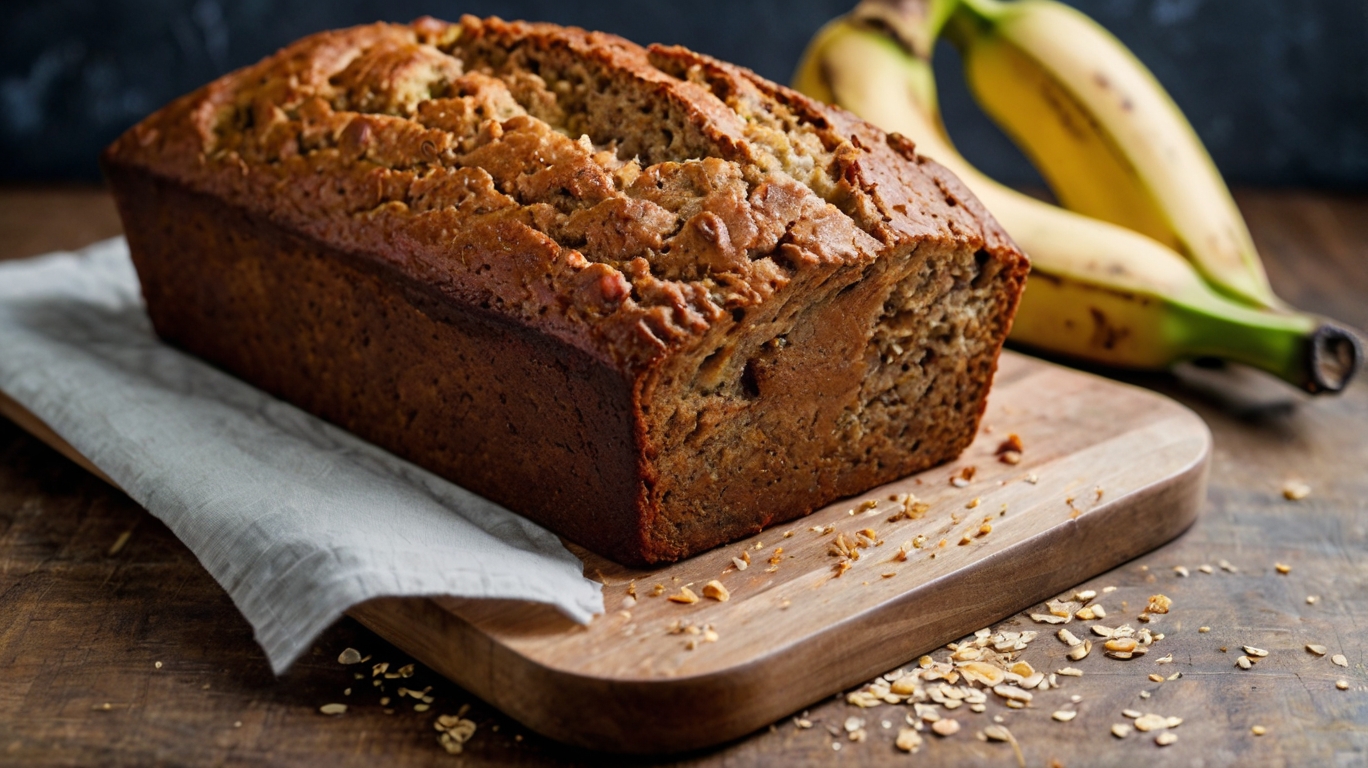
Key Takeaways for Success
- Banana Ripeness is Key – The spottier, the better
- Oil > Butter for moisture retention
- Brown Sugar adds flavor and softness
- Gentle Mixing prevents toughness
- Proper Cooling prevents crumbling
- Storage Matters – Wrap tightly to maintain freshness
Introduction: The Perfect Banana Bread
There’s something magical about pulling a golden loaf of banana bread from the oven. This ultimate moist banana bread recipe with oil and brown sugar delivers perfection every time – a tender crumb, rich caramelized flavor, and incredible moisture that lasts for days. Unlike traditional butter-based recipes, this version uses oil for superior texture and brown sugar for depth of flavor. Whether you’re a beginner baker or a seasoned pro, this foolproof recipe will become your new standard. Let’s explore why this banana bread stands above the rest and how to make it perfectly every time.
The Science Behind the Moisture
What makes this banana bread so exceptionally moist? The answer lies in the chemistry of our key ingredients. Vegetable oil coats flour proteins more thoroughly than butter, preventing gluten overdevelopment that leads to dryness. Meanwhile, brown sugar’s molasses content attracts and retains moisture far better than white sugar. When combined with the natural moisture from ripe bananas, this creates the perfect environment for ultra-tender bread that stays fresh longer.
Choosing the Right Bananas
The secret weapon in any great banana bread? Overripe bananas with plenty of brown spots. These bananas are sweeter (as starches convert to sugars) and mash more easily into a smooth puree. For best results, use bananas that are so ripe you’d normally consider throwing them away. No ripe bananas? Speed up the process by baking unpeeled bananas at 300°F for 15-20 minutes until their skins blacken.
Oil vs Butter: Why Oil Wins
While butter adds delicious flavor, oil reigns supreme for moisture retention. Butter contains about 15% water that evaporates during baking, while oil is 100% fat. This means oil-based banana bread stays moist for days rather than drying out. For the best of both worlds, use a neutral oil like vegetable or canola, or try coconut oil for a subtle tropical note. The result? Bread that stays tender from the first slice to the last.
The Magic of Brown Sugar
Brown sugar does double duty in this recipe. Its molasses content not only adds rich caramel notes but also attracts moisture from the air (hygroscopic properties), keeping your bread soft. The slight acidity in brown sugar also helps tenderize gluten strands. For deeper flavor, try dark brown sugar, or mix half brown and half white sugar for a lighter taste. Either way, you’ll get superior moisture compared to using white sugar alone.

Why This Recipe Works: The Science of Moisture
Understanding the science behind this recipe ensures consistent results:
- Oil vs. Butter: Vegetable oil (or coconut oil) creates a more tender crumb because:
- 100% fat content (butter contains 15% water)
- Coats flour proteins more thoroughly
- Prevents gluten overdevelopment
- Extends freshness
- Brown Sugar Benefits:
- Molasses content attracts and retains moisture
- Natural acidity tenderizes gluten
- Caramel notes enhance flavor complexity
- Creates a beautiful golden crust
- Banana Ripeness:
- Overripe bananas have converted starches to sugars
- Easier to mash into a smooth puree
- Provide natural sweetness and moisture
Ingredients & Their Roles
Wet Ingredients:
- 3 very ripe bananas (about 1 ½ cups mashed) – The star ingredient providing moisture, sweetness, and flavor
- ½ cup vegetable oil – Creates tender texture (can substitute melted coconut oil)
- ¾ cup packed brown sugar – For moisture retention and caramel notes
- 2 large eggs – Bind ingredients and add structure
- 1 tsp vanilla extract – Enhances overall flavor
Dry Ingredients:
- 1 ½ cups all-purpose flour – The structural base
- 1 tsp baking soda – Leavening agent (not baking powder)
- ½ tsp salt – Balances sweetness and enhances flavor
- ½ tsp cinnamon (optional) – Warm spice note
Step-by-Step Instructions with Pro Tips
1. Preparing the Pan
- Grease a 9×5 inch loaf pan thoroughly
- Line with parchment paper with overhang for easy removal
- Pro Tip: Dust greased pan with flour for extra non-stick insurance
2. Mashing the Bananas
- Peel bananas and place in large mixing bowl
- Mash with a fork or potato masher until smooth with some small lumps
- Pro Tip: For extra creamy texture, blend bananas briefly
3. Mixing Wet Ingredients
- Add oil to mashed bananas and whisk to combine
- Whisk in brown sugar until fully dissolved
- Beat in eggs one at a time
- Stir in vanilla extract
- Pro Tip: Room temperature ingredients incorporate better
4. Combining Dry Ingredients
- In separate bowl, sift together flour, baking soda, salt, and cinnamon
- Pro Tip: Sifting prevents lumps and aerates the flour
5. Bringing It All Together
- Add dry ingredients to wet ingredients
- Fold gently with rubber spatula until just combined
- Critical Tip: Overmixing develops gluten, leading to tough bread
6. Baking to Perfection
- Pour batter into prepared pan
- Bake at 350°F (175°C) for 50-60 minutes
- Test doneness with toothpick (should come out with moist crumbs)
- Pro Tip: Rotate pan halfway for even baking
7. Cooling Properly
- Let cool in pan for 10 minutes
- Transfer to wire rack to cool completely (about 1 hour)
- Important: Cutting too soon causes crumbling
Expert Troubleshooting Guide
Problem: Bread is dense/gummy
Solution:
- Check baking soda freshness
- Ensure proper measuring (don’t pack flour)
- Bake 5-10 minutes longer
Problem: Bread cracks on top
Solution:
- This is normal! Sign of proper rise
- Can reduce oven temp to 325°F for more even bake
Problem: Edges get too dark
Solution:
- Use light-colored metal pan
- Tent with foil last 15 minutes
Next-Level Variations
Mix-In Ideas:
- Classic Walnut: ½ cup chopped walnuts
- Double Chocolate: ½ cup chocolate chips + 2 tbsp cocoa powder
- Tropical: ⅓ cup shredded coconut + ¼ cup diced dried pineapple
- Protein Packed: ¼ cup vanilla protein powder (reduce flour by 2 tbsp)
Dietary Adaptations:
- Gluten-Free: 1:1 gluten-free flour blend
- Vegan: Flax eggs (2 tbsp ground flax + 6 tbsp water)
- Lower Sugar: Reduce brown sugar to ½ cup
- Whole Grain: Substitute half flour with whole wheat
Storage & Serving Suggestions
Keeping It Fresh:
- Room Temperature: Wrapped tightly, lasts 3 days
- Refrigerated: Up to 1 week (bring to room temp before serving)
- Freezing: Slice and wrap portions; freeze up to 3 months
Serving Ideas:
- Toasted with butter or cream cheese
- French toast style (dip slices in egg mixture and pan-fry)
- Bread pudding base
- Ice cream sandwich with vanilla ice cream
Frequently Asked Questions
Q: Can I use melted butter instead of oil?
A: Yes, but the bread will be slightly less moist and dry out faster. Reduce salt to ¼ tsp if using salted butter.
Q: My bananas aren’t ripe enough – help!
A: Bake unpeeled bananas at 300°F for 15-20 minutes until skins blacken, or microwave for 30-second intervals until soft.
Q: Can I make this in muffin form?
A: Absolutely! Bake at 375°F for 18-22 minutes. Makes 12 standard muffins.
Q: Why did my bread sink after removing from oven?
A: Likely underbaked. Next time test with toothpick – it should come out with moist crumbs but no wet batter.
Conclusion: Your New Go-To Recipe
This moist banana bread recipe with oil and brown sugar represents the perfect balance of simplicity and perfection. By understanding the why behind each ingredient and step, you’re equipped to make flawless banana bread every time. The oil ensures long-lasting tenderness, while the brown sugar contributes both flavor and moisture. Whether you enjoy it plain, toasted, or dressed up with your favorite additions, this recipe delivers consistent, delicious results. Keep this recipe handy – it’s sure to become a family favorite that you’ll make again and again. Happy baking!
Sustainable Cooking
Big Mac Sauce: Secrets, Ingredients and How to Make It at Home
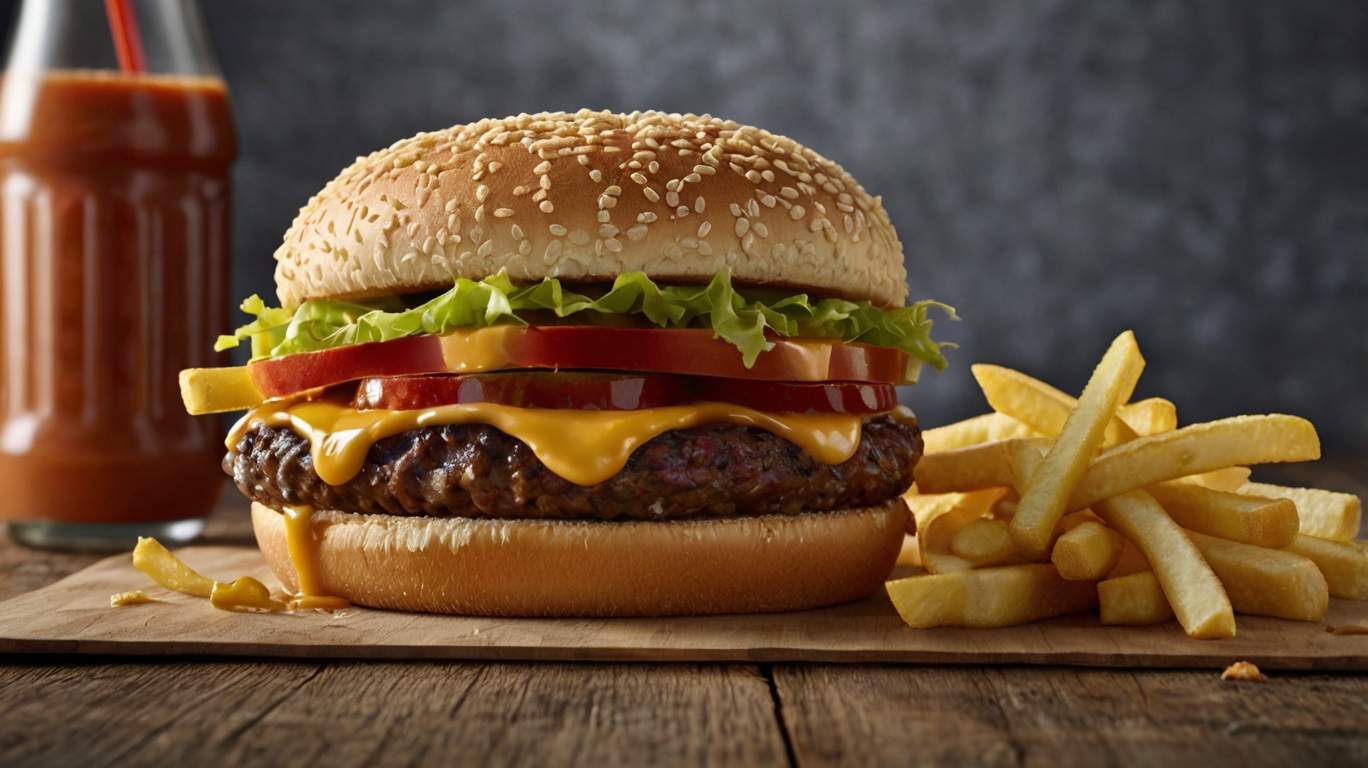
The Big Mac Sauce is the heart and soul of McDonald’s iconic Big Mac burger. Its creamy, tangy, and slightly sweet flavor has made it a global favorite. But what exactly is in this famous sauce? Can you find something similar in stores? And how can you recreate the Big Mac experience at home? Let’s dive into everything you need to know about Big Mac Sauce.
1. What is in a Big Mac Sauce?
The exact recipe for Big Mac Sauce is a closely guarded secret, but over the years, food enthusiasts and experts have cracked the code. The sauce is a creamy, tangy blend of the following key ingredients:
- Mayonnaise (the base)
- Sweet pickle relish
- Yellow mustard
- Vinegar
- Garlic powder
- Onion powder
- Paprika
- A touch of sugar or honey for sweetness
These ingredients combine to create the signature flavor that pairs perfectly with the beef patties, lettuce, cheese, pickles, and onions in a Big Mac.
2. What is the closest sauce to Big Mac Sauce?
If you’re looking for a store-bought alternative, Thousand Island dressing is the closest match to Big Mac Sauce. It has a similar creamy texture and tangy-sweet flavor profile. However, it’s slightly sweeter and lacks the distinct mustard and garlic notes of Big Mac Sauce. For a closer match, you can mix Thousand Island dressing with a bit of yellow mustard and a pinch of garlic powder.
3. What are the 7 ingredients in a Big Mac?
The Big Mac is more than just its sauce. Here are the 7 key ingredients that make up this iconic burger:
- Two Beef Patties: The foundation of the Big Mac.
- Big Mac Sauce: The star of the show.
- Shredded Lettuce: Adds a fresh crunch.
- American Cheese: Melts perfectly over the patties.
- Pickles: For a tangy bite.
- Diced Onions: Adds a subtle sharpness.
- Sesame Seed Bun: The iconic three-layer bun holds it all together.

4. How do you make your own Big Mac?
Recreating a Big Mac at home is easier than you think! Here’s how to make your own version:
Ingredients:
- 2 beef patties
- 1 sesame seed bun (or 3 slices for the classic triple-layer)
- 1 slice American cheese
- Shredded lettuce
- Diced onions
- Sliced pickles
- Homemade Big Mac Sauce (recipe below)
For the Big Mac Sauce:
- ½ cup mayonnaise
- 2 tbsp sweet pickle relish
- 1 tsp yellow mustard
- 1 tsp white vinegar
- 1 tsp garlic powder
- 1 tsp onion powder
- 1 tsp paprika
- 1 tsp sugar or honey
Instructions:
- Make the Sauce: Mix all the sauce ingredients in a bowl until smooth. Adjust seasoning to taste.
- Cook the Patties: Season beef patties with salt and pepper, then cook on a skillet or grill until done.
- Assemble the Burger: Toast the sesame seed bun. Spread Big Mac Sauce on the bottom bun, then layer with lettuce, cheese, beef patty, pickles, onions, and the middle bun. Repeat for the second patty and top with the final bun.
- Serve and Enjoy: Serve immediately with fries for the full Big Mac experience!
5. Tips for Perfect Homemade Big Mac Sauce
- Use Quality Ingredients: Fresh mayonnaise and high-quality spices make a big difference.
- Adjust to Taste: Add more mustard for tanginess or sugar for sweetness.
- Let It Rest: Allow the sauce to sit in the fridge for 30 minutes to let the flavors meld.
6. Why Make Big Mac Sauce at Home?
- Healthier Option: Control the ingredients and avoid preservatives.
- Customizable: Adjust the flavor to your liking.
- Cost-Effective: Save money by making it at home.
7. Fun Facts About Big Mac Sauce
- Global Love: Big Mac Sauce is loved worldwide and has inspired countless copycat recipes.
- Secret Recipe: McDonald’s has kept the exact recipe a secret for decades.
- Versatile Use: Use it as a dip for fries, a salad dressing, or a sandwich spread.
8. Frequently Asked Questions (FAQs)
- Can I make Big Mac Sauce ahead of time? Yes, it can be stored in the fridge for up to a week.
- Is Big Mac Sauce gluten-free? Yes, if you use gluten-free ingredients.
- Can I make it vegan? Substitute vegan mayonnaise and sugar for a plant-based version.
9. Why You’ll Love This Recipe
- Iconic Flavor: Recreate the taste of a Big Mac at home.
- Customizable: Adjust the sauce and toppings to your liking.
- Fun to Make: Perfect for a DIY burger night with family or friends.
Conclusion
Big Mac Sauce is the secret behind one of the world’s most beloved burgers. Now that you know what’s in it, the closest store-bought alternatives, and how to make your own Big Mac at home, you can enjoy this iconic flavor anytime. Give it a try and let us know how it turns out!
Sustainable Cooking
Cool Whip Fruit Salad: A Creamy, Fruity Delight for Every Occasion
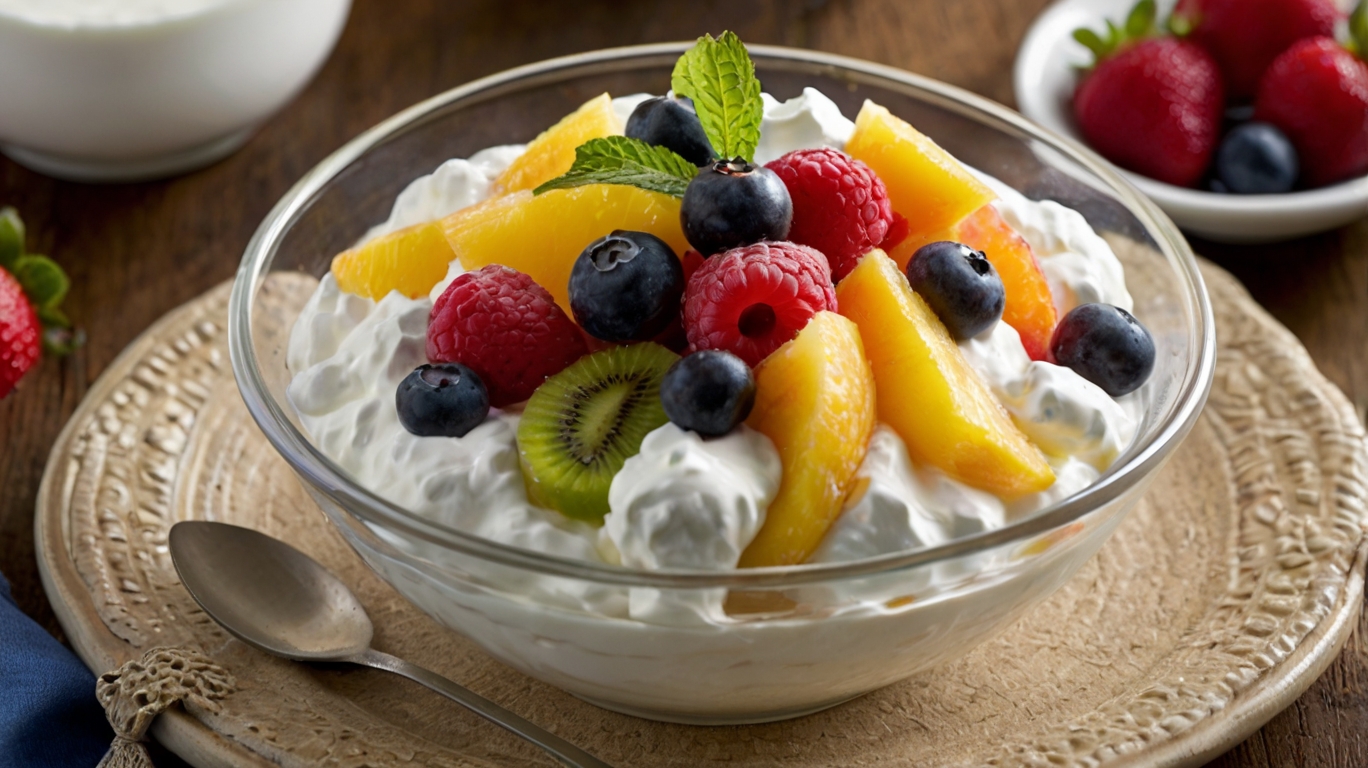
Fruit salads are a timeless dessert or side dish, offering a refreshing blend of flavors and textures. When combined with Cool Whip and a touch of instant vanilla pudding, this simple recipe transforms into a creamy, fluffy treat that everyone loves. Whether you’re preparing for a casual family dinner or a festive gathering, Cool Whip fruit salad is an easy-to-make dish that feels indulgent but is packed with fresh fruit flavors.
In this article, we’ll explore everything you need to know about making the best Cool Whip fruit salad, tips for achieving the perfect texture, variations to suit your taste, and how to serve it for any occasion.
What Is Cool Whip Fruit Salad?
Cool Whip fruit salad is a light and creamy dessert salad made with a mix of canned and fresh fruits, mini marshmallows, instant vanilla pudding, and whipped topping. Unlike traditional fruit salads, this version has a rich, fluffy texture and a touch of sweetness that pairs perfectly with the natural tang of the fruit.
This dish, often referred to as “fluff salad,” is versatile, customizable, and beloved by children and adults alike. Its creamy consistency and vibrant flavors make it a standout at potlucks, BBQs, and holiday dinners.
Ingredients for the Perfect Cool Whip Fruit Salad
To achieve the perfect balance of sweetness, creaminess, and freshness, here’s what you’ll need:
- Pineapple Tidbits (Canned): These add a tropical sweetness to the salad. The juice is also used to blend with the pudding mix for added flavor.
- Instant Vanilla Pudding: This is the secret ingredient that thickens the salad and enhances its creamy texture.
- Fruit Cocktail (Canned): A mix of pears, grapes, peaches, and cherries offers a variety of textures and tastes.
- Mandarin Oranges (Canned): Their delicate sweetness and juiciness add a delightful burst of flavor.
- Fresh Strawberries: Adds a pop of color and a balance of tartness to the salad.
- Maraschino Cherries: Stemless cherries are convenient and add vibrant color.
- Mini White Marshmallows: These give the salad its signature fluffiness.
- Cool Whip: The base that ties all the ingredients together. Any whipped topping brand will work, but Cool Whip is preferred for its stability.
How to Make Cool Whip Fruit Salad
This fruit salad is incredibly easy to prepare, making it a go-to for busy schedules. Here’s a step-by-step guide:
Step 1: Drain the Fruit
- Drain the juice from the canned pineapple into a large mixing bowl. Set aside the pineapple tidbits.
- Drain the fruit cocktail and mandarin oranges thoroughly to prevent the salad from becoming watery.
Step 2: Mix the Pudding
- Add the instant vanilla pudding to the reserved pineapple juice and whisk until smooth and creamy. This will form the base of your salad.
Step 3: Combine Fruits
- Add the drained pineapple tidbits, fruit cocktail, mandarin oranges, fresh strawberries, and halved maraschino cherries into the pudding mixture. Gently stir to coat all the fruit evenly.
Step 4: Add Marshmallows
- Mix in the mini marshmallows, ensuring they are evenly distributed throughout the salad.
Step 5: Fold in the Cool Whip
- Gently fold the Cool Whip into the fruit mixture using a rubber spatula. Be careful not to overmix, as this can break down the Cool Whip and fruit.
Step 6: Chill and Serve
- Cover the bowl with plastic wrap and refrigerate the salad for at least 1 hour before serving. Chilling helps the flavors meld together and gives the salad its signature creamy texture.
Tips for Making the Best Cool Whip Fruit Salad
- Use Fresh Strawberries: Fresh strawberries elevate the flavor and provide a vibrant, juicy texture. Opt for ripe strawberries for maximum sweetness.
- Chill the Cool Whip: Keeping the Cool Whip cold before mixing ensures the salad stays fluffy and doesn’t deflate.
- Drain Fruit Thoroughly: Excess juice from the canned fruits can make the salad watery, so draining them well is crucial.
- Use a Gentle Folding Motion: When combining the Cool Whip, use a light hand to maintain the salad’s fluffy texture.
Variations and Substitutions
This recipe is easily adaptable to suit different tastes and dietary preferences:
- Dairy-Free Option: Use a coconut-based whipped topping and ensure the pudding mix is dairy-free. The coconut flavor complements the fruit beautifully.
- Fresh Fruit Additions: Include fresh fruits like blueberries, kiwi, mango, raspberries, or bananas for extra freshness and flavor.
- Add Crunch: Mix in chopped nuts such as walnuts, almonds, or pistachios for added texture.
- Colorful Marshmallows: Swap plain marshmallows for fruit-flavored ones to give the salad a fun, ambrosia-like twist.
- Extra Sweetness: Add a tablespoon of maraschino cherry juice to the salad for a pop of color and a subtle cherry flavor.
Serving Suggestions
Cool Whip fruit salad pairs well with a variety of dishes:
- BBQ Favorites: Serve alongside grilled chicken, burgers, or ribs for a refreshing contrast.
- Brunch: Pair with pancakes, waffles, or muffins for a sweet and fruity side dish.
- Dessert Spread: Add it to a dessert table with Jello salad, cakes, or pies.
For a simple presentation, garnish the salad with a dollop of whipped cream and a cherry on top.
Storage and Shelf Life
Cool Whip fruit salad can be prepared ahead of time, making it a convenient dish for parties and gatherings. Store it in an airtight container in the refrigerator for up to 3–4 days. However, for the best texture and flavor, serve it within 24 hours.
FAQs About Cool Whip Fruit Salad
Can I Use Whipped Cream Instead of Cool Whip?
Cool Whip is stabilized, making it ideal for this recipe. Whipped cream tends to deflate quickly, resulting in a runny salad.
Can I Make It Ahead of Time?
Yes! Preparing the salad a day in advance allows the flavors to blend beautifully. Just ensure it’s stored in the refrigerator.
What Is the Difference Between Fluff Salad and Ambrosia Salad?
Ambrosia salad often includes fruit-flavored marshmallows and shredded coconut, whereas this fluff salad sticks to plain marshmallows and focuses on the creamy, fruit-filled base.
Conclusion
Cool Whip fruit salad is a crowd-pleaser that combines the natural sweetness of fruit with the creaminess of whipped topping and pudding. Its versatility, simplicity, and vibrant flavors make it an excellent addition to any meal, whether as a side dish or dessert. With just a handful of ingredients and minimal effort, you can whip up a salad that’s sure to impress friends and family alike.
Ready to elevate your next gathering? Try this Cool Whip fruit salad, and watch it disappear in no time!
fallow my page / Pinterest
-
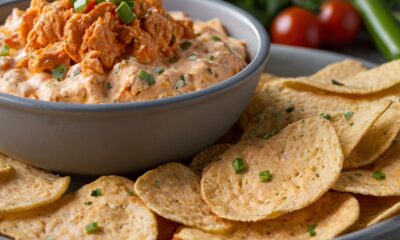
 Uncategorized3 months ago
Uncategorized3 months agoThe Ultimate Buffalo Chicken Dip Recipe
-

 Sustainable Cooking3 months ago
Sustainable Cooking3 months agoBig Mac Sauce: Secrets, Ingredients and How to Make It at Home
-
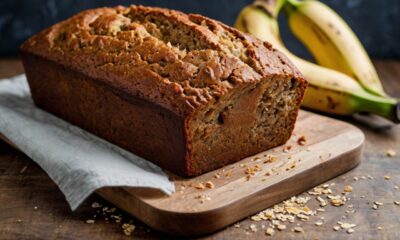
 Sustainable Cooking3 months ago
Sustainable Cooking3 months agoMoist Banana Bread Recipe with Oil and Brown Sugar The Perfect Treat
-

 World Cuisines5 months ago
World Cuisines5 months agoThai Basil Eggplant Recipe: A Flavorful Vegan and Gluten-Free Delight
-

 Sustainable Cooking5 months ago
Sustainable Cooking5 months agoSpicy Korean Chicken and Rice Recipe: A Flavor-Packed Comfort Meal
-
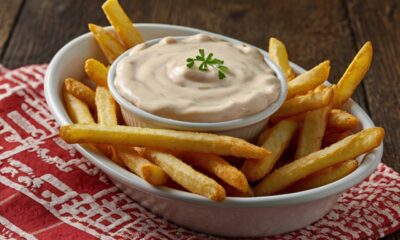
 World Cuisines4 months ago
World Cuisines4 months agoHow to Make Freddy’s French Fry Sauce: The Ultimate Copycat Recipe
-
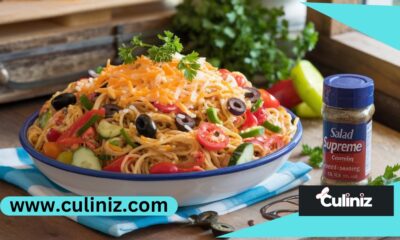
 World Cuisines8 months ago
World Cuisines8 months agoSpaghetti Salad with Salad Supreme: A Flavor-Packed Side Dish
-
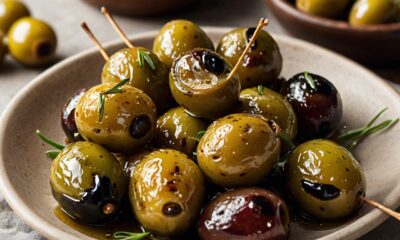
 Sustainable Cooking5 months ago
Sustainable Cooking5 months agoGrilled Olives: The Ultimate Crowd-Pleasing Appetizer



